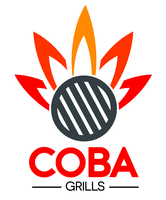For many centuries the rich potential of charcoal is widely known. Charcoal connected legends, histories and present day. Around 6000 years ago charcoal was the basic fuel to melt copper and because of this it was in much demand around the world. Well known personalities, such as, Henry Ford and Stafford Orin contributed to the methods of making charcoal briquettes for present day enjoyment.
During his tenure at the University of Oregon, Stafford became interested in: charcoal. In the early 20th century, charcoal was mainly used for commercial heating and railroads. It was manufactured by putting wood into a kiln, lighting a fire, and then sealing it shut to cut off the oxygen. The wood, left to smoulder, produced charcoal, but by using that process it took nearly a week to cool down. Stafford hoped to create a more efficient manufacturing process, as well as shorten the time needed for the charcoal to cool.
Firstly, he designed a rotary kiln in which to conduct his experiments. He fed the kiln sawdust instead of wood, successfully managing to cut back on cooking and cooling times due to increased surface area. However, the process came with one major drawback: the resulting powder was extremely difficult to use.
To remedy this, Stafford created a binding agent consisting of starch, water, and tar, and the mixture was then baked at 400 degrees Celsius. The result was the pillow-shaped charcoal lumps we know today. He dubbed his invention “briquettes,” and patented it in 1923.
Meanwhile, in Michigan, automobile magnate Henry Ford had a problem: he had too much wood, and didn’t know what to do with it.
With the help of a relative, Ford purchased thousands of acres of forestland in the Upper Peninsula to build his cars. At that time, a Model T required wood for its wheel spokes, engine cowling, and cabin frame. A sawmill was constructed near the forest, and a town sprung up around it.
Ford’s production facilities soon brimmed with sawdust and scrap wood. Loath to allow anything go to waste, Ford began to explore ways to turn the excess wood into profit. When he discovered Stafford’s patent he had his solution, and his friend, Thomas Edison, designed a factory to produce the charcoal briquettes from Ford’s leftover wood.
Ford shortened “briquettes” to “briquets,” and began to sell them at his dealerships alongside portable grills. The idea was that customers would buy the “picnic kits” while investing in a car, so they could escape on weekend excursions. The idea was a success, and for every ton of scrap wood his factories generated, Ford sold 681 pounds of charcoal.
In 1951, Ford sold the briquet operation, just as backyard barbecuing was becoming a popular American pastime. Little did he know that charcoal would give pleasure to millions of people around the world.
Charcoal and its manufacturing methods have not changed much for many decades. The development of “instantly-easy” briquettes was a very important innovation during the last century.
The top countries for producing coal are; China, India, USA, Kazakhstan, Poland, Germany, South Africa, Russia and Indonesia
Not only is charcoal used for a BBQ but the unique properties of charcoal can be added to food. It is widely used in Japan. Binchō-tan (Japanese: 備長炭), also called white charcoal or binchō-zumi, is a type of charcoal traditionally used in Japanese cooking.
Charcoal can also be used for medical purposes, such as, activated charcoal. What is activated charcoal? It is a fine, odourless, black powder often used in emergency rooms to treat overdoses. Its toxin-absorbing properties have a wide range of medicinal and cosmetic uses, though none are scientifically proven. However, please consult your doctor before using charcoal for medical purposes.
And now to present day…. this brings us to the LotusGrill beech BBQ charcoal:

LotusGrill beech BBQ charcoal boasts an extremely high carbon content and gross calorific value, meaning that it lights especially quickly and burns hotter and for longer than conventional charcoal. LotusGrill beech BBQ charcoal is a 100% natural product, made using local power sources only in Europe’s most modern production facility.
LotusGrill beech BBQ charcoal has been specifically designed for the Lotus BBQ Grill. This beech wood charcoal burns cleaner and enables your Lotus BBQ Grill to be virtually smokeless. The Charcoal comes in smaller chunks to enable you to fill the fire basket more evenly. The Lotus BBQ Grill will work with other charcoal, but it will not burn as cleanly and will burn nearly smoke free if this branded charcoal is used.
Due to this smokeless charcoal you can barbeque on your balcony (without disturbing your neighbours), you can even barbeque indoors with your Lotus BBQ Grill and the LotusGrill beech BBQ charcoal, but leave a gap for ventilation.
Please refer to your online shop www.coba-grills.hk for more information on these unique products.

0 comments